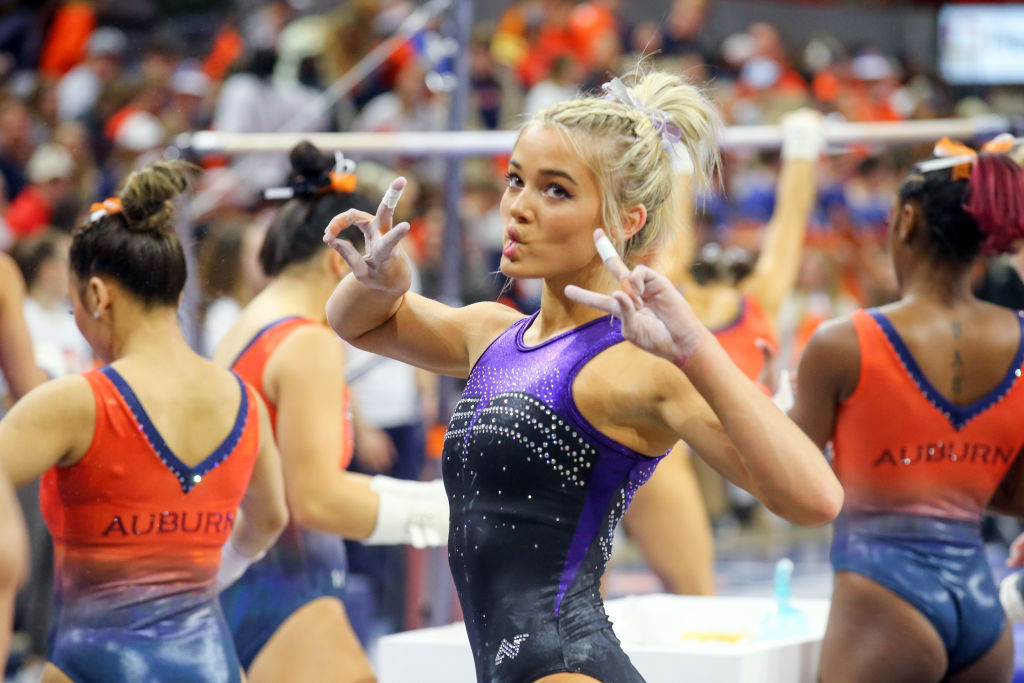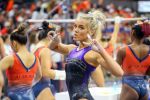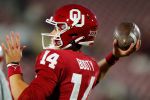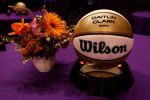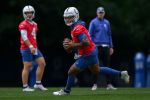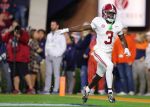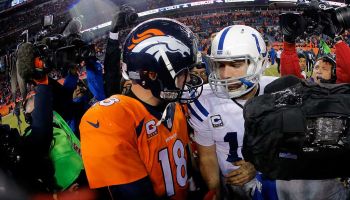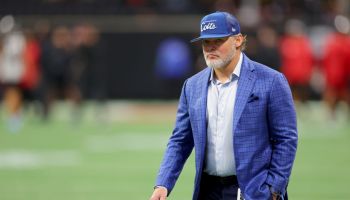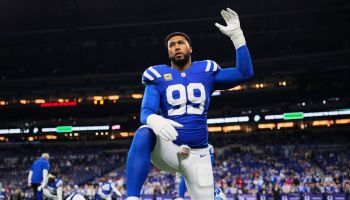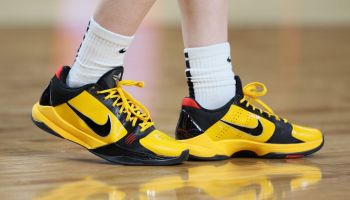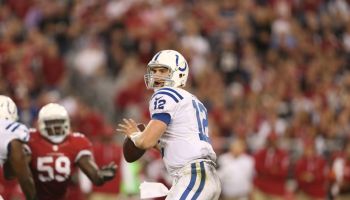Doug Pensinger | Getty Images
INDIANAPOLIS – Peyton Manning’s numbers were worse than Marc Bugler, David Garrard and Trent Edwards.
It was arguably the poorest stretch of Manning’s first-ballot Hall of Fame career.
After 7 games to start the 2008 season, Manning was a notch below mediocre, especially by his lofty standards.
Manning missed the entire 2008 Training Camp due to a bursa sac injury in his knee.
His numbers through the first two months of the ‘08 season certainly reflected some major rust.
Manning had 10 touchdowns, 9 interceptions while completing just 61.1 percent of his passes for a 79.0 quarterback rating following a 3-4 start in 2008.
Why?
“When Peyton came back it was a horrendous start to the season for the team,” then backup quarterback Jim Sorgi says when looking back on the 2008 season, when he was the team’s No. 1 QB during camp for an injured Manning. “You could tell he was waiting a little bit longer at the beginning of the season to see things a little more clearly rather than anticipating things. I think that comes from reps you get in practice, knowing where they are going to be and when they are going to be there.
“People talk about the speed of the NFL game. You can try to mimic that speed in practice but to not practice and go straight into a game, bodies are flying, guys are moving around and you know they are coming to knock you senseless. It can be a scary thought trying to get that timing down, that speed down. Things are happening extremely quick. I know this is a guy that had been in the league 11 years at the time. You think he has it down pat. But those reps for him in practice, and this is why he took all of them, all the time, were to prepare him for the games and to get him ready for the games. The speed ratchets up in games a little bit quicker, but at least it’s comparable to what you do in practice. He didn’t have those in practice.”
Andrew Luck is in the midst of something similar.
Unlike Manning, Luck’s practice drought extends back to December 2016—the last time he took practice reps in a team setting.
When Luck does get back on the field, presumably at the start of Training Camp, he will also be playing in a new offense, with new personnel all over the offense.
Even Manning himself has stressed the extreme value that comes with practice reps and how missing those can lead to some growing pains.
Sorgi isn’t too worried about Luck grasping Frank Reich’s system or even meshing with new personnel.
It’s the aspect that Manning struggled with initially—the timing and comfortability—that Sorgi says deserves more of the attention.
Once Manning hit the midway point in 2008, the elite level of play was back.
Manning led the Colts to a perfect 9-0 mark to the end the year, throwing for 17 touchdowns, 3 interceptions, with a QB rating of 109.7 and capturing his 3rd MVP award.
“You could tell he felt comfortable in the pocket, he could anticipate more, he had gotten those reps from the first 6 or 7 weeks, which Training Camp is 4 weeks long, and you are getting those reps heading into the season so you feel comfortable when the season comes,” Sorgi says of Manning. “That’s a constant battle to keep that timing of things with the guys that you are playing with all the time.
“When he finally did kind of settle in to the speed of the game, that’s when he started to take off like the guy we know.”
That’s the dilemma Luck faces.
How long will it take him to knock of the inevitable rust that is there for a guy who has missed ample time the last year and a half?
